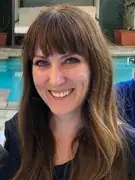
I traveled to Lusaka, Zambia as a part of an all-volunteer surgical team in September 2017. We worked alongside the excellent local medical staff at Beit CURE Hospital of Zambia on the outskirts of the city, offering free and low-cost pediatric orthopedic and plastic surgery. The vast majority of our cases were burn scar releases, delayed/chronic fracture management and surgical reconstruction of congenital conditions such as syndactyly or amniotic band syndrome. My role as the team’s only hand therapist was to provide post-operative orthotic fabrication, often right in the operating room, rushing to finish before the child woke up from anesthesia in order to ensure that the surgery was properly protected. I was also responsible for providing rehabilitation education to caregivers and parents via a local translator, a task that often felt like troubleshooting six months of formal therapy into a lesson or two. Many families we worked with had traveled several days on foot or by bus from their rural homes for the chance to have their child selected for surgery and it would be nearly impossible to expect therapeutic follow-up once they left the hospital. This was by far the most challenging aspect of my time there and it forced me to question my own expectations about what was possible and what was necessary.
The sprawling city of Lusaka is the capital of Zambia, a land- locked country in southern Africa, rich in minerals and the second-largest copper producer (The World Bank, para 1). “As of 2015, 58% of Zambians earned less than the international poverty line of $1.90 per day (compared to 41% across Sub-Saharan Africa) and three quarters of the poor lived in rural areas (The World Bank, para 1)”. The country operates under a universal healthcare system “largely financed from public tax, donor community grants and direct payments by households (that) are provided by the government, private not-for-profit and private for-profit providers” (Phiri & Ataguba, 2014, p. 2).
However, the bulk of the Zambian universal healthcare system is supported by the federally funded Ministry of Health. It is very poorly funded contributing to a lack of high level providers and high staff turnover due to low pay, poor conditions, and demanding workload. In reality, there is little to no care in rural areas where the majority of the poorest people live (Phiri & Ataguba, 2014). “The delivery of government services is organized at three broad levels of care: tertiary level, comprising tertiary teaching hospitals; secondary level, comprising provincial/general hospitals and district hospitals; and the primary level, consisting of health centers and health posts” (Phiri & Ataguba, 2014, p. 2). Private healthcare is available in major urban areas but is financially out of reach for most citizens. In fact, many upper class and ex-pats are often evacuated to neighboring South Africa when a higher level of care is needed.
According to the World Health Organization (2020), access to adequate local healthcare including physicians, specialists, and rehabilitation professionals remains a major barrier to getting timely and appropriate treatment following trauma. Serious burns are common in Zambia, particularly amongst the vulnerable poor, due to the prevalence of open cooking fires as well as the use of fire pits to dispose of trash as there are no public sanitation services. These pits pose a very serious danger to young children and adults with mobility issues as should they fall into one of these pits, they can become trapped leading to far more serious injuries. Mosquito netting poses another danger despite being a valuable tool to protect against malaria infection. When netting is used in close proximity to indoor cooking fires, it can act as a catalyst, spreading the flames and trapping people underneath it causing significant burn injuries. Second and even third degree burns, as well as fractures and tendon injuries, are often managed at home leading to horrific scar contractures and profound pain and dysfunction that cannot be so easily remedied in an otherwise strapped healthcare system.
Global Healthcare Workforce Alliance. (2020). World Health Organization.
https://www.who.int/workforcealliance/countries/zmb/en/
Phiri, J., & Ataguba, J. E. (2014). Inequalities in public health care delivery in Zambia. International journal for equity in health, 13, 24. https://doi.org/10.1186/1475-9276-13-24
The World Bank. (2019). https://www.worldbank.org/en/country/zambia/overview

